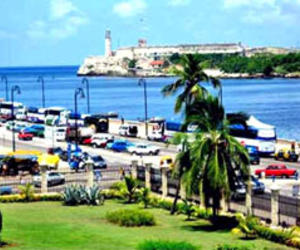United States Recognizes Cuba’s Anti-Drug Efforts
- Submitted by: manso
- Politics and Government
- 03 / 04 / 2011

HAVANA, Cuba, Mar 3 (acn) Cuba’s anti-drug efforts are recognized in the 2011 International Narcotics Control Strategy Report submitted on Thursday by the U.S. State Department.
According to the report, “Cuba is located between the large U.S. market and the largest exporters of illegal drugs in the hemisphere, and astride known smuggling routes.
This offers an incentive to drug trafficking organizations to utilize Cuba’s 5,746 kilometers of coastline and coastal waters for transshipment operations that avoid U.S. Government (USG) counter drug patrol vessels and aircraft. However, the Government of Cuba’s (GOC) interdiction efforts and pervasive police presence have limited the opportunities for regional traffickers.”
The text adds that “the twin goals of Cuba’s counternarcotics enforcement effort are to reduce the available supply of narcotics on the island and to prevent traffickers from establishing a foothold. The Cuban Border Guard (TGF) maintains an active presence along Cuba’s coastal perimeter, primarily to deter illegal emigration, but also to conduct maritime counter-drug operations and coastal patrols. Cuba’s domestic drug production remains negligible as a result of stiff sentencing for drug offenses, very low consumer disposable income and limited opportunities to produce illegal drugs, either synthetic or organic, in quantity. To date, Cuba’s counternarcotics efforts have prevented illegal narcotics
trafficking from having a significant impact on the island.”
After noting that Cuba is a signatory to the 1988 UN Drug Convention, the document points out that “Cuba has continued to demonstrate a commitment to fulfilling its responsibilities as a signatory to the 1988 United Nations Convention based on adherence to the Convention’s Articles.
Specifically, Cuba has criminalized drug related offenses as outlined in Article Three; including 39 judicial agreements with partner nations regarding judicial proceedings and extradition. Furthermore, in accordance with Article Nine, the GOC has continued to exhibit counternarcotics cooperation with partner nations.
The GOC reports having 32 counterdrug bilateral agreements and two memoranda of understandings (MOU) for counterdrug cooperation. Cuba has annually attended several international counternarcotics efforts such as the United Nations’ Heads of National drug Law Enforcement Agencies (HONLEA), and submits quarterly statistics on drug interdictions and seizures to the United Nation’s International
Narcotics Control Board.”
“The GOC occasionally broadcasts anti-drug messages on state run media and operates an anonymous 24-hour helpline. In addition, the GOC reports the dangers of drug abuse are a part of the educational curriculum at all levels of primary and secondary schools,” the report notes.
“In coming years, greater communication and cooperation among the U.S., its international partners and Cuba, particularly in the area of real-time tactical information-sharing and improved tactics, techniques and procedures, would likely lead to increased interdictions and disruptions of illegal trafficking,” the text concludes.
Comments